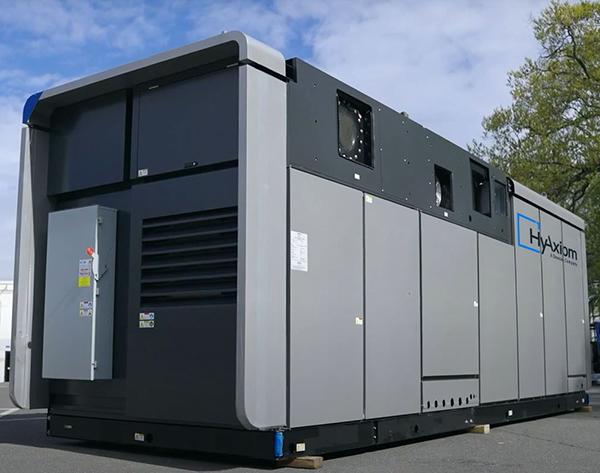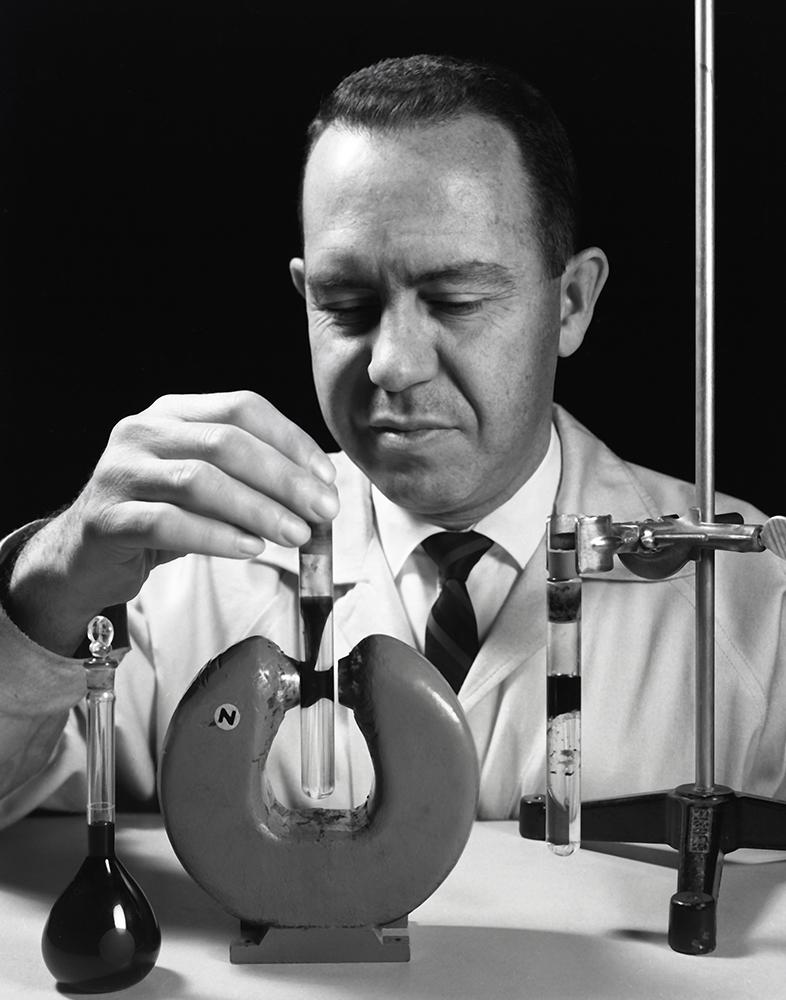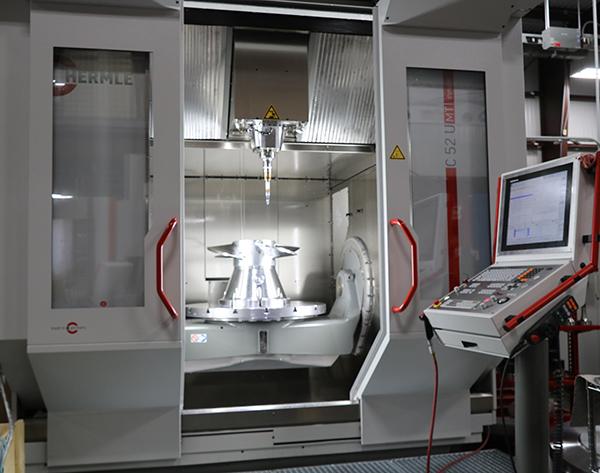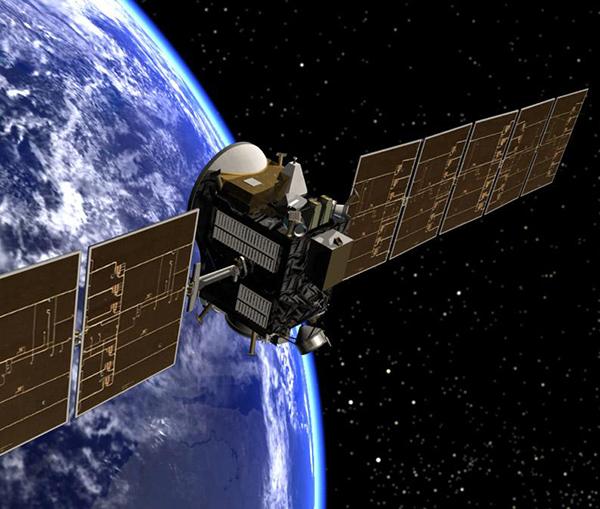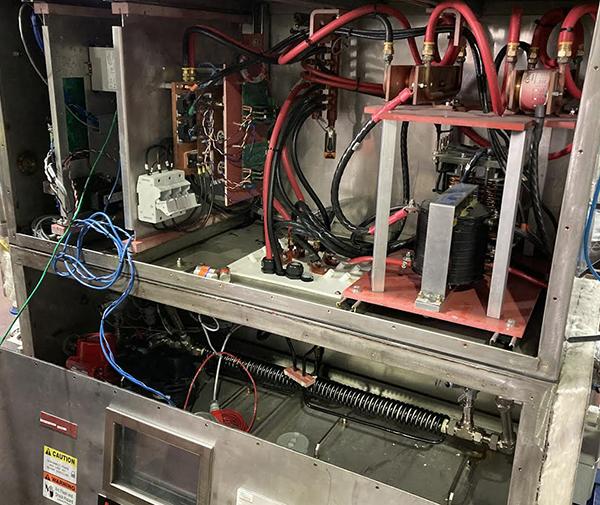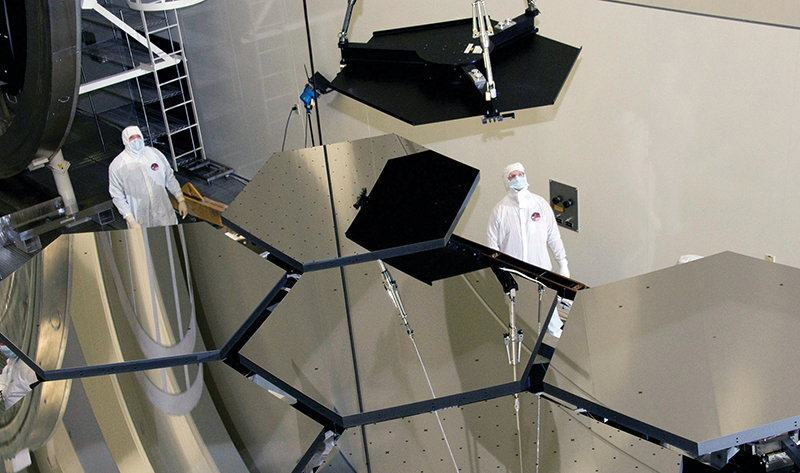
Stitching Techniques Advance Optics Manufacturing
Originating Technology/NASA Contribution
The amount of detail a telescope can see is directly related to the size of its mirrors. To look deep into space at galaxies over 13 billion light years away, NASA requires telescopes with very large mirrors. Scheduled to launch in 2021, the James Webb Space Telescope (JWST) will have one 6.5-meter primary mirror as well as one 0.5-meter secondary mirror.
While most optical surfaces are spherical, the primary and secondary mirrors in the JWST are aspheres, or non-spherical. Such optics are far more difficult to manufacture, but the quality of images seen through an asphere is far superior to those seen through traditional spherical lenses.
To make a high-precision optics element, the surface must be precisely measured and then polished to meet those measurements. The use of a precision tool called an interferometer (which measures the surface) is important, because an optical surface can only be polished as precisely as it can be measured. For the highest quality optics, the surface is measured and polished to the nanometer level, or to 1/100,000th the size of a human hair. When it comes to measuring aspheres, often custom interferometers have to be built for each specific application.
Because NASA programs depend on the fabrication and testing of large, high-quality aspheric optics for applications like the JWST, it sought an improved method for measuring large aspheres.
Partnership
QED Technologies, of Rochester, New York, had developed a device for measuring spherical optical surfaces up to and exceeding approximately 0.2 meters. Called a subaperture stitching interferometer (SSI), the technology used a stitching technique that measured a series of sections on an optical surface, compiled data from each section, and then stitched it together to obtain a complete measurement. This enabled more accurate and full-aperture measurements of large optics.
Intrigued by the technology, Goddard Space Flight Center awarded two Small Business Innovation Research (SBIR) contracts to QED to upgrade and enhance the efficiency, capability, and flexibility of the stitching technology for aspheres.
As a result of working with NASA, as well as follow-on work with the U.S. Army Research Laboratory, QED developed the SSI-A, which was capable of applying the stitching technique to larger aspheres. The company also developed a breakthrough machine tool called the aspheric stitching interferometer (ASI), the first-ever commercial solution that enabled the measurement of high-departure aspheres without the use of dedicated null optics (additional optics that are expensive, difficult to make, and often inaccurate).
Dr. Andrew Kulawiec, metrology product line manager at QED, explains the benefits of the technology developed in part with NASA. “It reduces the cost and lead time for producing aspheres compared to traditional methods. It’s beneficial, because you can buy this instrument to measure a specific asphere, and when you are done with it, you can measure the next asphere. For our customers, the companies who are making aspheres, it provides a lot of flexibility to be able to go after new business,” says Kulawiec.
In 2008, the SSI-A earned QED the “R&D 100” award, granted by R&D Magazine for being one of the 100 most technologically significant products introduced into the market that year. Then in 2010, QED was named a finalist for the “Prism Award for Photonics Innovation” for its ASI.
Product Outcome
High-precision optical elements are used not only in telescopes, but also in microscopes, cameras, medical scopes, and binoculars. While a typical microscope objective may have 6 or 8 elements, a professional camera may have 10 to 20 optics. To achieve a sharper image or to look at a larger area, even more optics may be added to a device. Another option is to incorporate aspheric optics into the device.
“In conventional optics, all of the surfaces have a spherical shape, but if you change some of those surfaces to have an aspherical shape, you can reduce the number of elements that are required to achieve the same image quality, and potentially reduce costs as well,” says Kulawiec.
Until recently, the manufacturing of aspheres was time consuming and expensive, with each asphere requiring a custom interferometer setup. With QED’s advances, one device can be used to measure many different optics, so a variety of industries have started to incorporate aspheres into their imaging devices.
“The ASI has allowed aspheres to become more prevalent in the optics industry by making them easier to manufacture and to measure,” says Kulawiec. “NASA enabled the optics industry to make and measure the types and parts that it needed.”
The use of aspheres results in higher quality images, fewer optical elements, less weight, and reduced system size. As a testament to the popularity of aspheres, QED’s ASI has remained in a sold-out state since it was introduced to the market in 2009. QED has sold systems in Asia, Europe, and North America for research and development, military and defense, security and surveillance, and digital imaging.
One of the leading suppliers of optics and optical components, Edmund Optics (EO), uses the SSI-A for the correction of high-precision prisms and aspherical surfaces. According to the company, QED’s technology has allowed for rapid measurement of aspherical surfaces as well as allowed EO to meet and exceed its customers’ application needs.
An additional application for the technology is in photolithography, or the process used to print patterns on the computer chips used in electronics like cell phones and laptops. QED’s systems assist the industry in manufacturing the high-precision optics used in this process.
In 2010, the ASI was implemented at the Leibniz Institute for Surface Modification in Leipzig, Germany, for precision fabrication and measurement of aspheres. According to the institute, the ASI is an important addition, because it can develop surface figuring and finishing steps that produce surfaces with accuracies in the nanometer range.
As for the future of the technology, QED plans to scale it up for even larger optics. “The ASI is a significant innovation and new capability for manufacturing aspheres, but we don’t believe it ends there. We believe further development is possible to measure even more complex shapes. It’s a technology we can work with and continue to develop for quite some time.”
SSI-A® and ASI® are registered trademarks of QED Technologies.
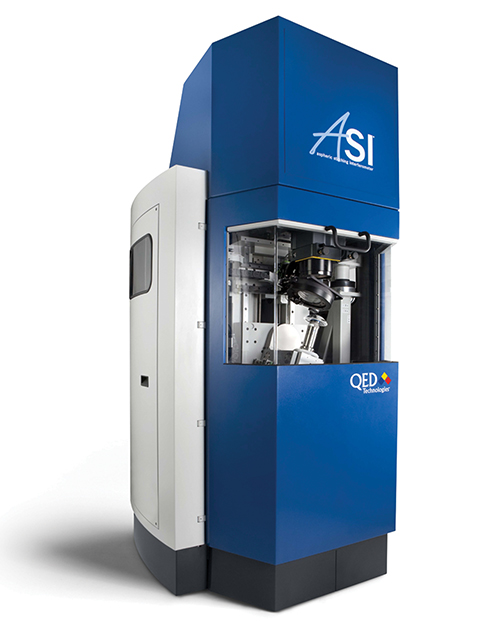
Compared to traditional methods, QED Technologies’ Aspheric Stitching Interferometer decreases the cost and lead time for producing aspheres (non-spherical optics). By using more aspheres in an optical system like a microscope, designers can decrease the total number of optical elements, weight, and size.

The primary mirror for the James Webb Space Telescope will have 18 hexagonal-shaped mirror segments, each measuring 1.3 meters in diameter. Here, the mirror segments are being prepped to move into the X-ray and Cryogenic Facility at NASA’s Marshall Space Flight Center.








